Under the flag of the crab. Overseas possessions of the Duchy of Courland
The Duchy of Courland existed in 1562-1795. in the western part of modern Latvia and included the historical lands of Kurzeme, Zemgale and Celia. In fact, it was a German, not a Latvian state. The Latvian peasants made up the bulk of the population in it, but remained powerless, which played virtually no role in determining the country's policy. The highest class of the duchy - the nobility, as well as the merchants and most of the urban burghers were ethnic Germans. By the middle of the 17th century, only 200 thousand people lived on the territory of Kurland.
The history of Courland dates back to the time when the Baltic lands were ruled by the Livonian Order. When in 1559 the landmaster of the Livonian Order, Gothard Ketler, recognized the sovereignty of the Grand Duchy of Lithuania over the lands of Courland, the process of secularization of the former order's territory began, which in 1561 ended with the collapse of the possessions of the order and the appearance of Kurland in their territory one more year later. The title of the Duke of Courland was adopted by the former Landmaster of the Order, Gothard Kettler, who managed to retain control over part of the order's lands. The Duchy of Courland was dependent on the Grand Duchy of Lithuania, and then on the Commonwealth.
The basis of the ruling class of the duchy consisted of former knights of the Livonian order - mainly Germans by origin. They were allocated estates throughout the territory of Courland, and the Latvian peasants fell into serfdom, legally confirmed in 1570. However, despite the distribution of Kurland lands among landowners, a third of the country was owned by the Duke - thus, he became the largest landowner of Courland. Under the sons of Gotthard Ketler Wilhelm and Frederick, Courland was divided into two domains. Kurland in 1587-1616 Wilhelm Kettler ruled, and Semigalia (Zemgale) - Friedrich Kettler. In 1616, Mr. William, who tried to pursue a tough authoritarian policy, was removed from power, and the duchy was again united under the rule of Friedrich Kettler.
The Enlightened Duke: the heyday of Courland
The Golden Age of the Duchy of Courland began with the grandson of the founder of the state, Duke Jacob Kettler (1610-1682), who reigned in 1642-1682.
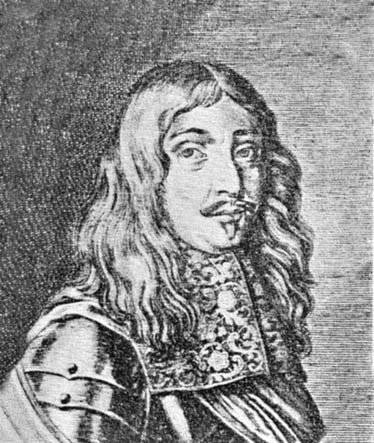 The reign of Duke Jacob was accompanied by the economic rise of Courland, the development of political and commercial relations with other states. Jacob was the son of the estranged Duke William, but his uncle Friedrich Ketler raised him, after whom Jacob inherited the throne. Jacob's father Wilhelm was expelled from Courland and lived in Pomerania, so young Jacob, visiting his father, often visited German cities. The young duke was educated at the University of Leipzig and Rostock, then in Amsterdam, where he mastered shipbuilding (under the name of Jacob van der Berg, hiding his ducal origin). Shipbuilding and marine fleet Jacob Ketler was always interested. In general, in his figure, of course, when taking into account the scale of activity, there is some similarity with Peter the Great. Jacob Ketler, like Peter, studied in Europe, was interested in shipbuilding and shipbuilding, sought to turn Kurland into a sea power. We can say that to a large extent he managed to do this. In the middle of the XVII century, during the reign of Jacob Ketler, the Duchy of Courland possessed the largest navy among other German states. The fleet of Courland was more numerous and powerful than the fleets of Brandenburg, Hamburg, Lübeck, not to mention the smaller possessions. He walked under a burgundy flag with a black crab.
The reign of Duke Jacob was accompanied by the economic rise of Courland, the development of political and commercial relations with other states. Jacob was the son of the estranged Duke William, but his uncle Friedrich Ketler raised him, after whom Jacob inherited the throne. Jacob's father Wilhelm was expelled from Courland and lived in Pomerania, so young Jacob, visiting his father, often visited German cities. The young duke was educated at the University of Leipzig and Rostock, then in Amsterdam, where he mastered shipbuilding (under the name of Jacob van der Berg, hiding his ducal origin). Shipbuilding and marine fleet Jacob Ketler was always interested. In general, in his figure, of course, when taking into account the scale of activity, there is some similarity with Peter the Great. Jacob Ketler, like Peter, studied in Europe, was interested in shipbuilding and shipbuilding, sought to turn Kurland into a sea power. We can say that to a large extent he managed to do this. In the middle of the XVII century, during the reign of Jacob Ketler, the Duchy of Courland possessed the largest navy among other German states. The fleet of Courland was more numerous and powerful than the fleets of Brandenburg, Hamburg, Lübeck, not to mention the smaller possessions. He walked under a burgundy flag with a black crab. Having established close trade relations with the largest ports of Northern Europe and the Atlantic coast, Kurland has become a prosperous state. This was facilitated by large volumes of trade in the Baltic States, carried out by the Dutch and German merchants. Through the ports of Windavu and Libauu, Courland had the opportunity to trade maritime communication with the North Sea and Atlantic ports of Europe. The development of the Courland fleet of Dukes Jacob considered the business of his life. Several shipyards were created in the country, the largest of which were Ventspils and Kuldig. At the same time, in addition to hiring foreign craftsmen, the duke turned to the practice of using labor of Latvian artisans and workers, as he saw the profitable difference between the latter and Dutch and German specialists - the labor of Latvian workers could be paid much cheaper than the services of foreigners. Only at the Ventspils shipyard during the reign of Jacob was 80 of merchant ships and 40 of military ships built. Moreover, part of the ships was built for sale and was sold to England and France.
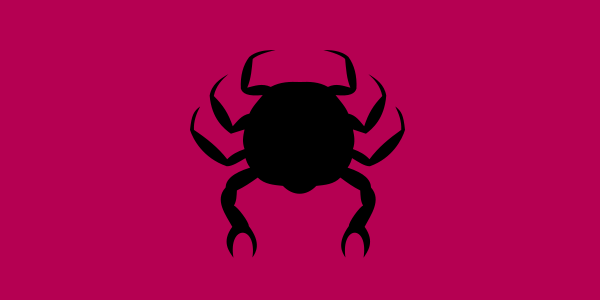
To support the shipbuilding industry, the duke has attended to the development of the metallurgical industry and several other industries. Manufactories and workshops were created - 17 iron-smelting, 11 forges, 85 workshops for the manufacture of ropes, ropes and sails, a number of sawmills. Arms manufacturing was also developing - 10 gun-foundry and 14 saltpetre factories, 5 powder mills were created in Kurland. The Duchy has become an exporter of not only ships, but also ship equipment and artillery weapons. The development of shipbuilding and maritime trade contributed to the transformation of Courland into one of the key rivals of the Netherlands in controlling the maritime traffic in the Baltic Sea. Naturally, the Dutch authorities did not like this situation and, ultimately, it was the Dutch who turned out to be the “grave-diggers” of the Courland colonial possessions, which will be discussed below.
The economic policy of Jacob Kettler was based on the principles of mercantilism. The Duke believed that the share of exports in the foreign trade of Kurland should be increased as much as possible, while reducing the share of imports. In fact, to a large extent he succeeded in this: Kurland imported only salt, spices, precious metals, luxury goods, and the Duchy provided basic needs at its own expense and also exported a number of goods, from food to sea vessels. However, in order to expand trade and strengthen their positions in international trade, Jacob Kettler decided to acquire overseas possessions that would increase the further economic well-being of Kurland.
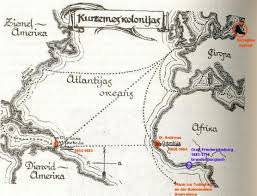
The middle of the seventeenth century was marked by attempts by a number of minor European states to establish control over the territories in the New and Old World. Denmark, Sweden, Brandenburg acquired their colonies for long or not very long periods of time. The Duchy of Courland also attempted to establish overseas colonies in the West Indies and in West Africa. These two areas were considered the most promising for the Atlantic trade of the time. Slaves, ivory, and gold were exported from West Africa, and tobacco, sugarcane, rum, and coffee were exported from the West Indies. At the same time, the presence of colonies in the West Indies implied desirability and possession of trading stations on the African coast, which would allow the removal of slaves for work on the West Indian plantations.
St. Andrew's Island
In 1651, the 30 gun ship "Der Walfisch" ("Whale") with the Kurland crew aboard moored to the Gambia River in West Africa. Here, Duke Jacob Kettler decided to create a colony of Courland, with the aim of which the island was acquired from the local leaders Barr and Kosan in 10 km. from the mouth of the Gambia River. The expedition was commanded by Joachim Deniger, who subordinated about 100 Kurland soldiers and officers. The island, formerly uninhabited, was named after St. Andrew. A few months later, another Kurland ship, the 24-gun “Crocodile”, landed on the island, carrying a squad of Kurland soldiers from 60-70.
Kurland settlers set about building the main buildings necessary for the functioning of the colony on the island’s territory. A military fort was built, called "Fort Jacob" - in honor of the duke, a Lutheran church (church), several residential and warehouse premises. A Lutheran cemetery was created where the dead colonists were buried. Also, according to the type of similar Dutch colonies, 13 trading posts were built with barracks for black slaves. Trade began with the locals, as a result of which the Kurland residents, instead of offering fabrics, beads and alcohol, acquired slaves, ivory, gold, animal skins.
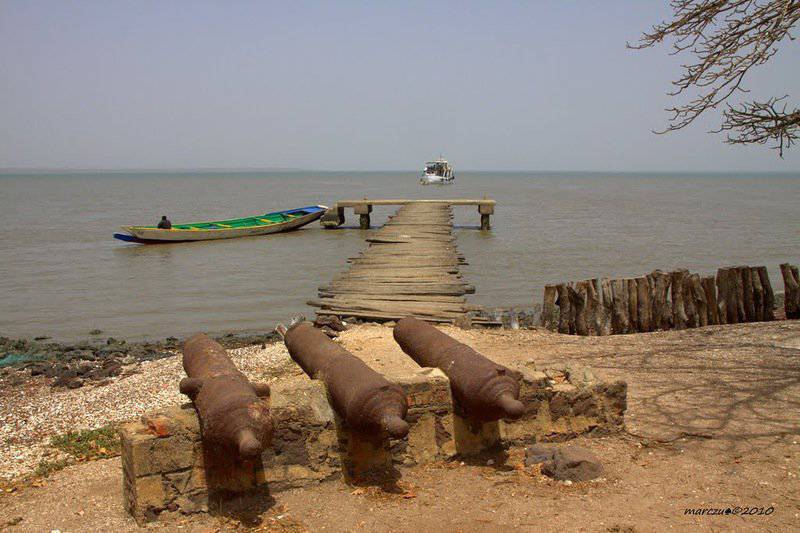
Initially, the number of Kurland settlers on the island of St. Andrew was not more than a hundred people. However, then, as the position of the settlers on the island strengthened, Jacob Kettler acquired Banjul Island. The total population of the Courland colony in West Africa was about 250 people, including several dozens of merchants and merchants and the Kurland military garrison of 150-200 soldiers and officers involved in guarding the colony. It was assumed that the islands would become a stopover base for the supply of slaves from West Africa to the West Indies - the Duchy of Courland also planned to actively engage in the slave trade, which brought enormous income during that period. However, despite the fact that originally the Duchy of Kurland made big plans for the colony that emerged at the mouth of the Gambia river, the duke lacked real forces to maintain his dominance in the region.
In 1655-1660 The Northern War lasted, the echoes of which reached far overseas possessions. Taking advantage of the fact that the Duke Jacob was in 1658-1660. in the Swedish captivity, the island of St. Andrew decided to capture the long-standing rivals of the Courland - the Dutch. In 1659, the Dutch ships approached the island - a long siege of the Courland colony began. From the second assault attempt, Dutch troops managed to take Fort Jakob and capture the governor of the colony Otto von Stiel. So the island of St. Andrew was captured by the Dutch. Subsequently, he passed many times from one ruler to another — the Dutch, French and British colonialists fought for power over the mouth of the Gambia River. Ultimately, the Gambia became a British colony, and the island of St. Andrew was renamed the island of St. James. This happened after, in 1664, Britain entered into an agreement with Courland, under which Kurland’s ownership in West Africa was transferred to it, and London, in turn, recognized Kurland’s right to own Tobago Island in the West Indies.
New Courland: the colonization of the West Indies
The colonial expansion of the Duchy of Courland in the West Indies was also brief, although it was longer and more active than in West Africa. In 1650's The Duke Jacob turned to the King of the Commonwealth, Jan II Casimir and Pope Innocent X with a proposal to send a fleet of 40 ships to South America. It was assumed that, relying on the Kurland outpost on Tobago, Rzeczpospolita would acquire colonies in Guyana and northern Brazil. However, the death of the Pope of Rome and the complication of the situation in Poland due to Cossack uprisings did not allow this plan to be realized.
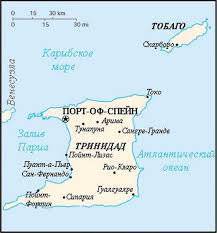 The first Courland ship, carrying the 212 of Courland soldiers and colonists, reached Tobago Island in 1637. The first Kurland settlement was founded here, but soon after its creation, an epidemic of tropical disease began, which in a short time took the lives of all the colonists. However, the Duchy of Courland did not leave plans to establish a colony in Tobago. In 1642, the Kurland expedition once again arrived on the island. This time, the colony managed to survive until 1650, when it was destroyed by the warlike Indians - the Carib, after which the surviving settlers fled to the territory of modern Guyana.
The first Courland ship, carrying the 212 of Courland soldiers and colonists, reached Tobago Island in 1637. The first Kurland settlement was founded here, but soon after its creation, an epidemic of tropical disease began, which in a short time took the lives of all the colonists. However, the Duchy of Courland did not leave plans to establish a colony in Tobago. In 1642, the Kurland expedition once again arrived on the island. This time, the colony managed to survive until 1650, when it was destroyed by the warlike Indians - the Carib, after which the surviving settlers fled to the territory of modern Guyana. Finally, the expedition in 1654 became the most large-scale and famous attempt to create the Courland colony in Tobago. It was preceded by lengthy negotiations with the British authorities, who also claimed control of this part of the West Indies. Ultimately, the Duke Jacob managed to obtain consent to the suzerainty of Courland over the island of Tobago from both Oliver Cromwell and Charles II Stewart. Moreover, Cromwell, agreeing to the creation of the Courland colony, sought to ensure the neutrality of the Courland fleet in the Anglo-Dutch war. As for King Charles, he gave this to the help that the Duke of Courland rendered to the royalists during the civil war in England, sending six warships to the aid of the royal fleet. Thus, two influential figures of British politics did not object to the colonization of the island.
20 May 1654 arrived on the island of Tobago with the 45-gun ship “The coat of arms of the Duchess of Courland” (Das Wappen der Herzogin von Kurland), commanded by Captain Willem Mollens. On board the ship were 80 families of Kurland colonists and an armed detachment of 25 officers and 124 soldiers of the Courland army. Captain Mollens declared the island of Tobago possession of the duke and renamed it to New Courland. Expeditionary detachment were founded two settlements - Jacobstadt and Fort Jacob. Somewhat later, two more settlements were created - Fort Casimir, named after the eldest son of Duke Friedrich Casimir, and Novaya Mitava, named after the capital of Courland. The construction of residential buildings began in the colony, a Lutheran church was founded. A slave market opened in New Mitawa, where slaves brought from Kurland trading post on St. Andrew’s Island in West Africa were sold. Captain Willem Mollens was appointed governor of the island.
A regular sea connection was established between the metropolis and the island of Tobago. In August, 1655 arrived in New Kurland with the ship of Captain Jan Brandt with supplies of food and other supplies for the Kurland colony. 4 September 1656 was joined to the island by the ship "Constance", whose commander Wolfert von Bradrot Kloting was appointed as the new governor of the island. Together with the new governor, 130 families of Kurland settlers arrived. In the same year, 1656 was visited by the Mir ship under the command of captain Andreas Bohun, who brought 120 colonist families to the island. In 1657, the Courland gallion "Pani" commanded by Captain Nicholas de Brou moored to the island, on which were new supplies of ammunition and food for the colony.
The communication between Kurland and New Kurland was not interrupted even in 1658, when the Swedes captured Duke Jacob. This year, the island was visited by as many as three Courland ships - the “Cavalier” commanded by Captain Willem Mollens with food supplies, then the “King David” by Captain Jacob Alberts, who brought 150 families of settlers and “The Islander” by Captain Elé Hils with 100 families of Kurland colonists. Duke Jacob, in order to increase the population of the Kurland colony in Tobago, allowed to give free to those Latvian peasants who agreed to go to New Kurland. Thus, among the settlers who arrived in the West Indies on the Courland ships were not only German officers of the Courland service, but also Latvian peasants. On the territory of the Courland colony, sugar cane, tobacco and coffee plantations were created, the export of which was supposed to be organized in Europe through Courland ports.
- monument to the colonists of Courland
It should be noted here that in the same 1654 a private expedition arrived in Tobago equipped with Dutch businessmen brothers Adrian and Cornelius Lampsius. They seized part of the island without asking permission from the Governor of Courland, and declared it a colony of "New Valheren." The Dutch founded the New Flisingen settlement - after the town in Zeeland, where the Lampsius brothers came from. Naturally, such arrogant behavior of the Dutch did not remain without the proper reaction of the Duke of Courland - Jacob sent a note of protest to the General States - the Netherlands Parliament, who resolved the dispute in favor of the Duchy of Courland, recognizing the latter’s sovereignty over Tobago Island. Thus, even the Dutch authorities confirmed the illegality of the actions of the Lampsius brothers. However, the Duke of Courland allowed the brothers and the colonists who arrived with them to remain on the island. Obviously, he hoped that he would not interfere with the extra European population.
The Duchy of Courland was established trade with the West Indies. Building materials, tools, amber, glassware, salted fish and beer were delivered from Kurland to Tobago and other West Indian islands belonging to England, Holland and Spain. Tobacco, cotton, ginger, cane sugar, indigo, rum, coffee, fruit, exotic birds were shipped from the West Indies to Courland. Thanks to the development of maritime trade with New Kurland, the ports of Libava and Vindava became a sort of center of colonial trade in the Baltic region. From Courland colonial goods were delivered to the Polish-Lithuanian Commonwealth, Sweden, Germany, Russia. Throughout Europe, an extensive network of sales agents of the Duchy of Courland, which worked in Stockholm, Copenhagen, Berlin, Hamburg, Koenigsberg Amsterdam, The Hague, London, Lisbon, Vienna and Venice, was created.
The Northern War and the Overseas Epic Fiasco
However, the economic prosperity of Courland and its plans for further colonial expansion in the West Indies and West Africa were disturbed by the Northern War, which began in the 1655 year. The fighting between the key countries of Eastern and Northern Europe, claiming control of the Baltic Sea. Sweden, Denmark, Brandenburg, Rzeczpospolita, and the Russian kingdom participated in the war. Although Duke Jacob proclaimed Courland a neutral state, the troops of the Swedish king Karl X Gustav invaded the country. The Swedish monarch uttered his famous phrase “Duke Jacob is too rich to be just a duke, but too weak to become a king.” Karl X Gustav hoped to include the entire Grand Duchy of Lithuania, Prussia, Northern Poland, Denmark and Norway into the “Great Sweden”. Naturally, a similar fate awaited Kurland. In 1655, the Swedish army invaded the territory of the Duchy of Courland. A small and weak Kurland army was unable to resist the Swedish troops, and a large navy was locked up in ports. Kurland capitulated, and the Duke and his family were placed under house arrest in 1658 and remained in captivity until 1660, until the end of the war.
The occupation of Courland by Swedish troops had the most negative impact on the fate of the Courland colonies in the West Indies and Africa. It was at that moment that the fallacy of the decision of the Duke of Courland, who allowed the Dutch and French colonists of the Lampsius brothers to remain on the island, became clear. Upon learning of the occupation of Kurland by Sweden, the Dutch declared to the Governor of Kurland that the Swedes would never release the Duke, Courland would cease to exist as a sovereign state and, accordingly, the ownership of the island of Tobago would pass to the Dutch. The Lampsius brothers felt certainty, because in 1658, the 500 of the French colonists arrived on the island, who settled near Fort Jacob and enjoyed the patronage of the Dutch. Thus, at the disposal of the brothers was a colony with a population of 1200 people.
The Courland population of the island was only 1000 people. Ultimately, Captain Christopher von Kaiserling, the Governor of Fort Jacob, from Courland, surrendered without the help of the metropolis. Many soldiers returned to Kurland in 1660-1661. The Courland settlement Jacobstadt paid indemnities to the Dutch, but the latter still occupied the colony. In 1660, 1500 European inhabitants and 7000 African slaves lived on the territory of a Dutch colony. Thus, New Courland actually came under the rule of the Netherlands. At the same time, the Dutch captured the colony of West Africa in Kurland. Trying to consolidate their influence in Tobago, the Lampsius brothers in 1662 turned to French King Louis XIV, who recognized the island as French territory and granted the brothers the title of “Barons of Tobago”.
After the end of the Northern War and the liberation from captivity in 1660, the Duke Jacob decided to restore sovereignty over the colony on the island of Tobago. Moreover, the power of the Duchy of Courland over the island was still recognized by many European states. The Courland administration left Tobago in 1666, after the attack on the island of pirates by the English corsair Robert Searle, who arrived in Tobago on two ships of 80 men. Soon after the pirates attacked Tobago, a British garrison was stationed. The Dutch garrison arrived in 1667 in Tobago. At the same time, in 1668, the Duke of Courland re-tried to restore sovereignty over the island. He sent a warship to Tobago, but the Dutch garrison fought off a Kurland attack. In 1676, the ship “Giant” was sent to Tobago under the command of Captain Jan Hertz Revs, on which were 11 of Courland officials, whose task was to study the situation on the island. In 1681, two Courland ships arrived on the island, which stopped at Jacob Bay. It was decided to establish a new settlement, the governor of which appointed Franz Monk. However, after the death of the Duke Jacob, the gradual decline of the Duchy of Courland began, connected, among other things, with the fact that the new duke was not as educated and inclined to acquire resources and land as his predecessor.
The heir to Duke Jacob, Duke Friedrich Casimir, sent two expeditions to the island on 1686 - led by captain Schmoll and led by new governor Dietrich von Altenbocken. However, the governor’s ship was wrecked off the coast of Tobago and the governor himself died from his injuries. In May 1690, the last Kurland settlers left for their homeland. In 1698, the Courlanders tried to send another expedition to the island - under the command of British captain Sir William Valery, but the British prevented it from arriving. However, until the Duchy of Courland was annexed to the Russian Empire in 1795, the governors of New Courland continued to be appointed dukes, who, however, had never been in possession of them. That is, the colony existed "on paper."
The colonial expansion of Kurland was doomed to failure due to the insignificant powers of the duchy. At the end of the XVII - XVIII centuries. and much stronger states — Denmark, Sweden, Brandenburg, Spain — have lost many of their colonial possessions. Therefore, the small Duchy of Courland had no prospect of retaining power over the colonies in the West Indies and West Africa. Another thing is that we cannot know how the further fate of the Courland possession in Tobago would exist, if it existed for a longer period of time and after the Duchy of Courland joined the Russian Empire it would be under Russian power.
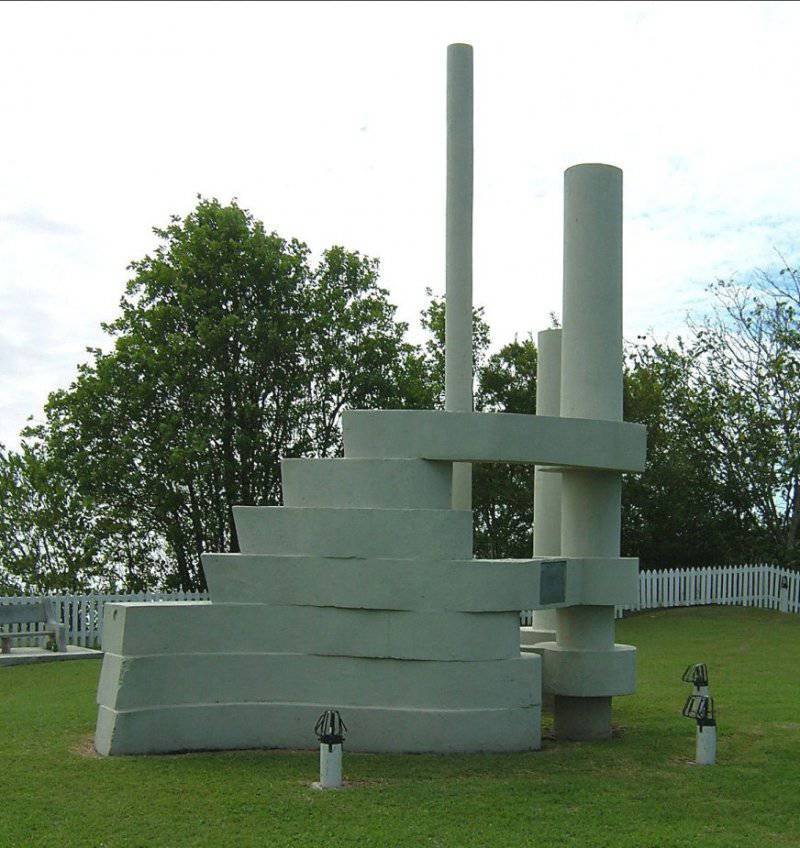
Information